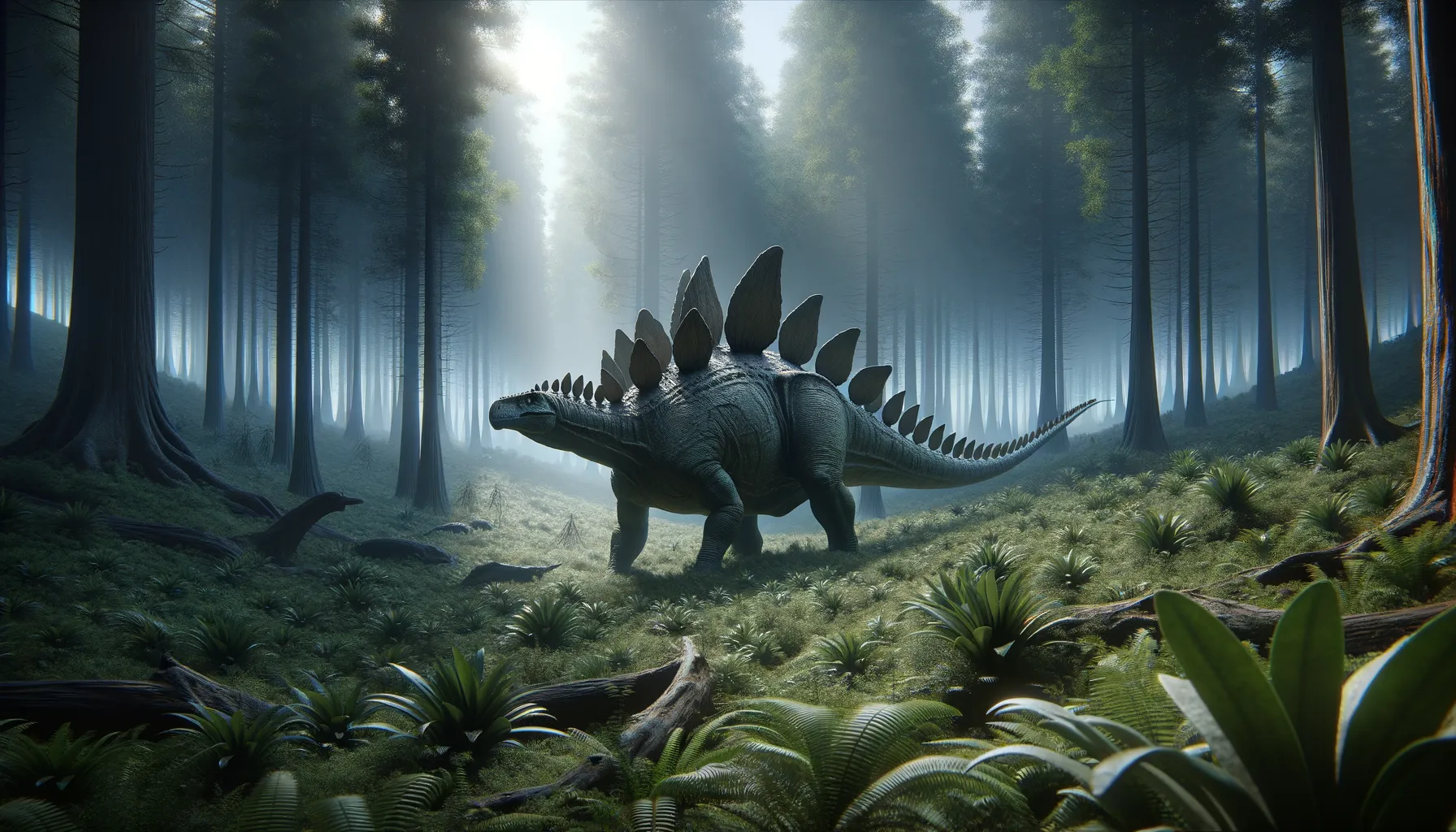
Stegosaurides
An armored giant of the Jurassic era!
Period
Jurassic
Length
Around 9 meters long.
Height
Up to 3 meters tall.
Weight
Approximately 3 to 5 tons.
Stegosaurides, a genus of stegosaurid dinosaurs, roamed the earth during the Jurassic period. Known for its distinctive double row of bony plates along its back and spikes on its tail, this herbivorous dinosaur primarily grazed on low-lying vegetation. Its slow pace and unique physical characteristics made it a fascinating subject for paleontologists, providing key insights into dinosaur diversity and adaptation strategies.
Diet
Stegosaurides was a herbivore, feeding primarily on plants. Its diet likely included ferns, cycads, and other low-lying vegetation. It had a complex digestive system to break down coarse plant materials.
Hunting
Being a herbivore, Stegosaurides did not hunt for animals. It foraged through forests and plains for edible plants. Its foraging habits were influenced by its slow speed and physical build.
Environmental challenges
Stegosaurides faced challenges such as changing climates and predation from carnivorous dinosaurs. Fluctuations in temperature and vegetation types may have affected its food availability. Predators like Allosaurus posed a constant threat, requiring Stegosaurides to rely on its protective armor and tail spikes.
Speed
Stegosaurides was quite slow, moving at a leisurely pace.
Lifespan
Typically around 20 to 30 years.
First discovery
First discovered in the late 19th century in North America.
Fun Facts
- Stegosaurides were herbivorous dinosaurs that roamed the Earth during the late Jurassic period.
- These dinosaurs were part of the stegosaur family, known for their distinctive plates and spikes along their backs and tails.
- The name 'Stegosaurides' means 'roofed lizard-like,' highlighting their bony, plate-covered appearance.
- Stegosaurides likely used their spiked tails, known as 'thagomizers,' for defense against predators.
- Despite having large bodies, their brains were relatively small, comparable to the size of a walnut.
- Fossils of Stegosaurides have been primarily discovered in what is now North America.
- These dinosaurs are believed to have moved in herds, which helped protect them from predators.
Growth and Development
Young Stegosaurides likely grew rapidly, reaching full size within a few years. Fossils indicate a pattern of continuous growth throughout their lives. Juveniles might have had a slightly different plate arrangement compared to adults.
Habitat
Stegosaurides inhabited lush, semi-forested regions during the Jurassic. It likely preferred areas with abundant plant life, such as ferns and cycads. These environments provided the necessary resources for its herbivorous diet.
Interaction with other species
Stegosaurides shared its habitat with a variety of other dinosaurs and prehistoric creatures. Its interactions were likely passive with other herbivores but defensive against predators. The presence of its back plates and tail spikes suggests a deterring effect on predators.
Natural lifespan
In natural conditions, it could live up to 30 years.
Reproduction
Stegosaurides reproduced by laying eggs, likely in nesting colonies. Both parents may have contributed to nest protection and maintenance. Hatchlings were relatively self-sufficient shortly after birth.
Social behaviour
While not highly social, Stegosaurides might have formed loose groups for foraging. This grouping could have provided some protection against predators. Communication may have been limited to simple visual and vocal signals.
Fossil locations
Fossils of Stegosaurides have been primarily discovered in North America. These include regions such as the Morrison Formation, known for numerous well-preserved dinosaur fossils. Such findings have contributed extensively to our understanding of Jurassic ecosystems.
